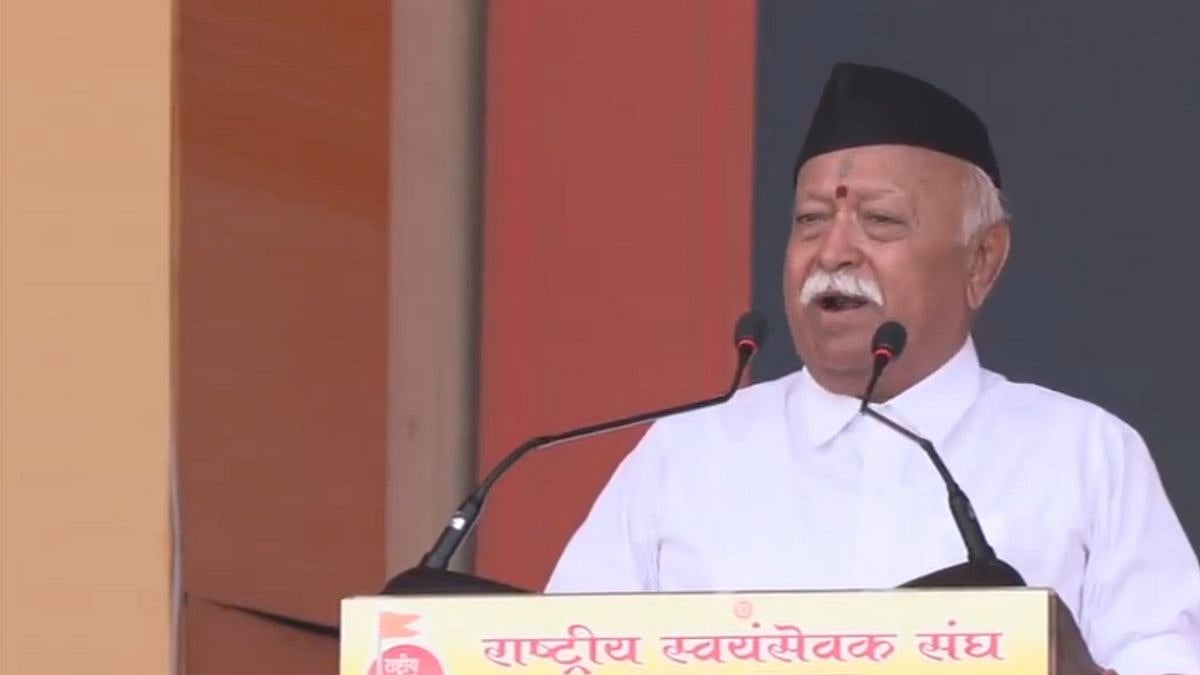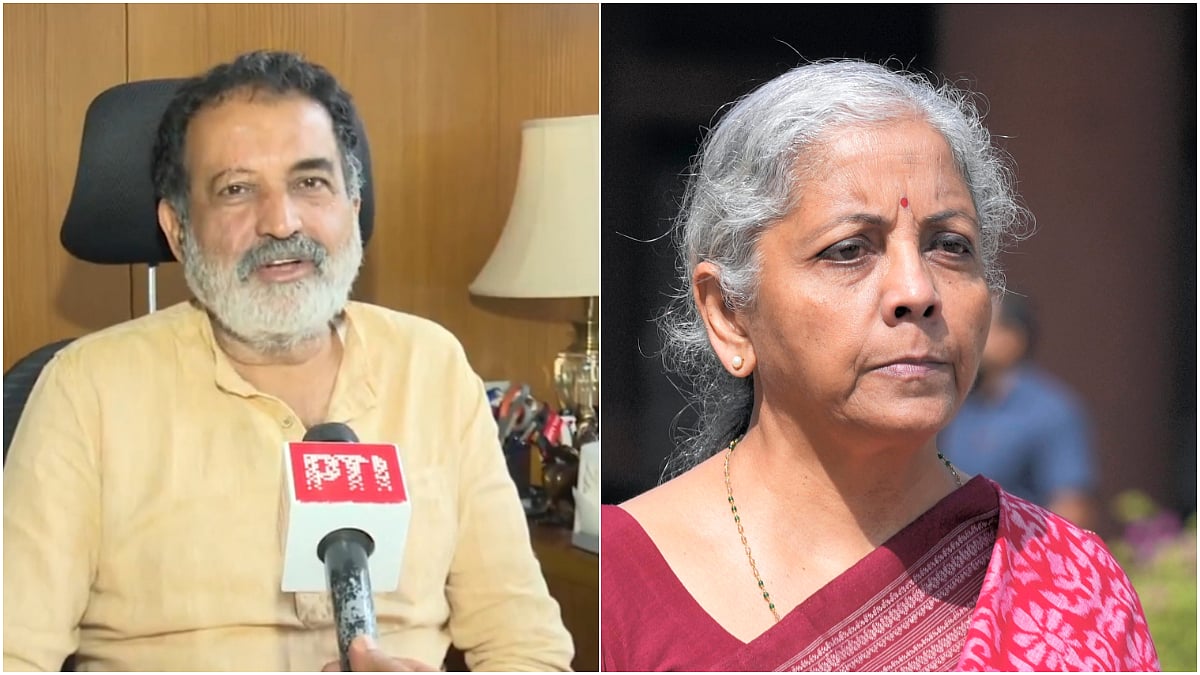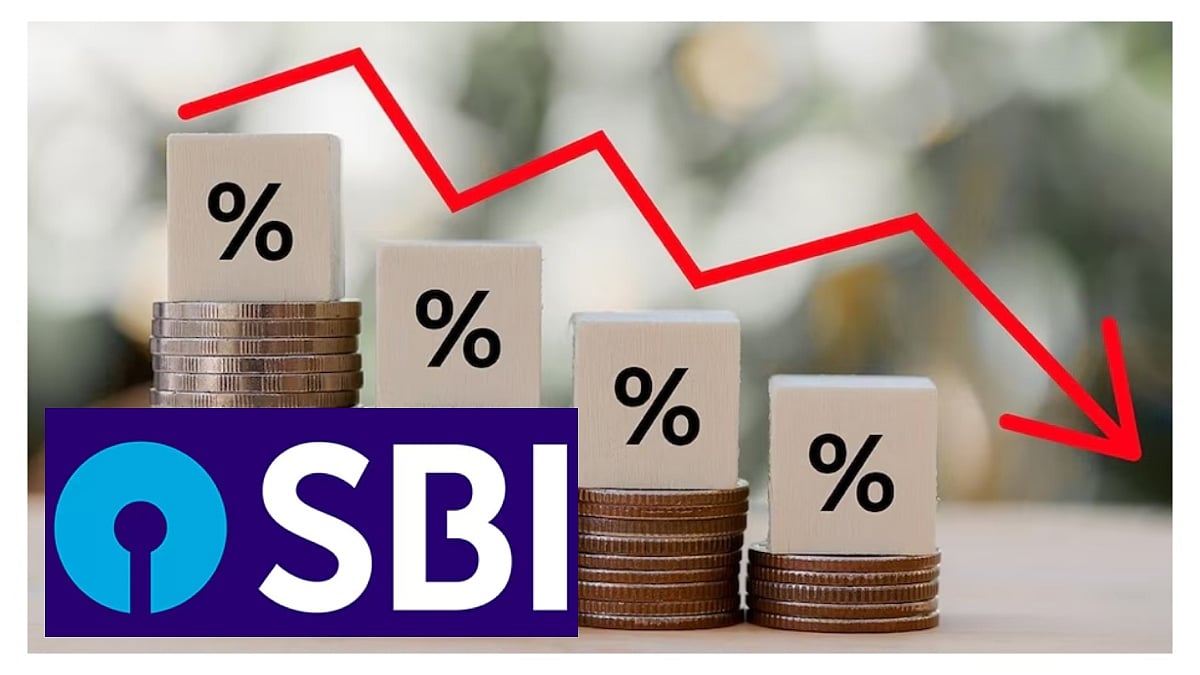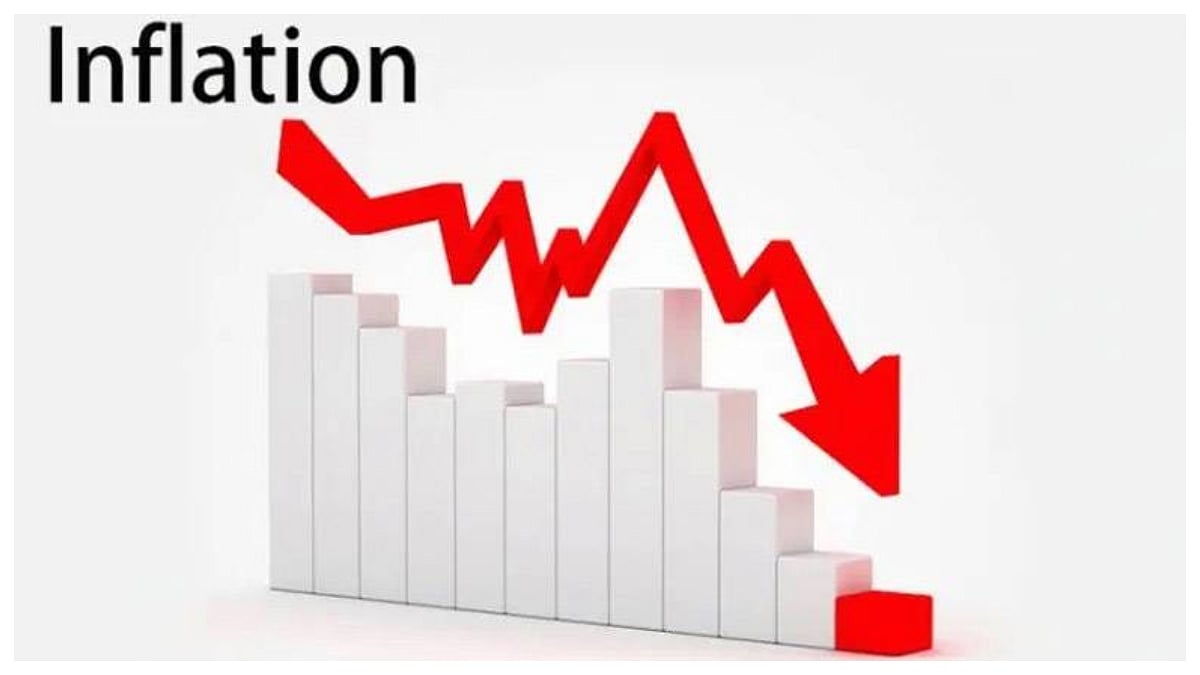Water, water, everywhere, Nor any drop to drink…
When Samuel Taylor Coleridge wrote these lines in his epic Rime of Ancient mariner in 1798, little did he know his words might turn out to be so prophetic in the 21st century. Over 69 crore Indians lack access to drinking water. Groundwater is getting deeper, rivers and ponds and lakes are drying, and en masses migration of populations are making water scarcer and rarer. On World Water Day (22nd March) it is imperative to bring the focus back to the management of water resources or its lack thereof. The very survival of our planet is at risk unless we find ways to resolve water management.
Marzin Shroff, Managing Director and CEO of Eureka Forbes Ltd., a company known for its iconic product, Aquaguard is at the helm of providing clean drinking water to the urban Indians. While his mandate is to make the water business future proof for the company, he is also passionately involved in several water resource management across the country. Speaking to Shekhar Ghosh, Shroff shares his views and passion to conserve, manage and judiciously alleviate the impending water crisis in India and the world.
Only 3% of the Earth's water is freshwater. Of this, icecaps and glaciers store 69% and groundwater only 30%. Lakes, rivers, and swamps combined only account for 0.3% of the Earth's total freshwater reserves. The population will soon exceed 7 billion. What kind of challenges do you foresee for humanity in the years to come?
Water is life… it is the primary factor that distinguishes our planet from others. While the global supply of available freshwater should be adequate to meet the current demand for safe drinking water, the distribution of the same isn’t uniform, and that gives rise to water scarcity. There are many scattered regions across the globe where freshwater resources are inadequate to meet increased demand due to higher per capita consumption and increased population. One such region is India where the lack of adequate clean water to meet human consumption is indeed a constraint on human health and productivity.
It is our responsibility as major players in the field of research and development of water purification, must find ways to remove these constraints. However, our endeavours are constantly getting interrupted by multiple challenges, especially changing and uncertain future climatic conditions and a rapidly growing population with increased water consumption. How best to combat these challenges requires research in all aspects of water management.
Global warming is said to be melting polar caps and glaciers, threatening to raise the sea levels, but should these melting glaciers not bring more freshwater reserves to our planet.
Glaciers act as natural reservoirs, storing water in the winter and doling it out in the summer as the ice slowly melts. The glacial ice keeps the water locked away in a form in which it doesn’t easily evaporate. To give an example Peru is on the verge of facing water shortages. That's because one of the largest rivers coming off the high Andes glaciers, the Rio Santa, is already running low on the glacial melt. So the assumption that melting polar caps and glaciers are beneficial for freshwater reserves needs to be understood better. Another impact to understand is that many parts of the world are low-lying and are already being severely affected by modest sea rises. Rice paddies are being inundated with saltwater, which destroys the crops. Seawater is contaminating rivers as it mixes with freshwater further upstream. So largely, I do view global warming and melting polar caps and glaciers as a problem which needs urgent attention.
While freshwater is a renewable resource, yet the world's supply of groundwater is steadily decreasing, most prominently in Asia. What is your prognosis of the situation?
The supply of fresh water currently might not be as abundant as saltwater, but it can be termed as a renewable resource if we manage it properly. Unfortunately, water is also one of the most poorly managed resources on Earth. The biggest culprits to blame would be water pollution and water wastage.
Water demand is expected to increase over the next few decades. It is improbable that natural supplies will be sufficient to meet that demand in several parts of the world. While most of the world’s water will continue to be used in agriculture, industrial and household use, demand is expected to rise at a faster rate than the available supplies.
About 20 per cent of the world’s groundwater, which supplies drinking water to more than half of the world’s population, is already over-exploited. Water conservation is the best option to reduce rising water stress, but we aren’t seeing concrete steps in that direction. Desalination and water recycling could reduce pressure on water sources, but are unlikely to prevent an increase in global water insecurity.
Presently, water resources are not equally distributed leading to water scarcity in some parts of the world. On a per capita basis and measured in terms of naturally renewable freshwater, Northern Africa, South Asia and the Middle East are at greatest risk of water scarcity.
Wastewater is also a growing global water security challenge. It is estimated that more than 80 per cent of the world’s wastewater is released into the environment without being collected or treated – polluting the environment and wasting a renewable resource.
The rapid urbanisation of India and other countries is putting huge pressure on groundwater reserves. The state seems to have failed in providing clean potable water to the population. Is there a solution to replenish the depleting groundwater reserves?
Groundwater has great value for its economic, social and environmental uses i.e. potable water, water supply system, agriculture, industry and recreation. Groundwater and surface water are interlinked with each other where the impact on one can lead to the change in the quality or quantity of others. Hence, protection of groundwater should be as rigorous as that of surface water.
India, in recent years, has witnessed more issues than ever before relating to groundwater contamination as a result of pollution from natural and human activities. The rapid growth in population, agriculture, urbanisation, industrialisation and developmental activities are responsible for a decline in quality, depletion of quantity and availability of the vital ground water resource. The major causes of groundwater pollution are attributed to domestic sewage intrusion, leaching from solid waste surface dumps, and agro-chemical runoffs. Recovery of deteriorated groundwater is one of the most difficult tasks but necessary to avoid the further negative impacts on our ecosystem and life.
The most effective solution to this issue would be conserving the limited groundwater sources we have. Apart from that, we can always set up community drinking water projects which can serve a mass audience with safe and healthy drinking water. Eureka Forbes as an organisation has already executed such projects, one such project being in collaboration with the Dalmia Bharat Foundation that helped provide projects serving a population of over 4,000 people in Kolhapur.
What are the challenges of drinking water in India. Should there be a need to supplement drinking water with vitamins and minerals to improve physical wellbeing of babies and children in rural areas?
Consumers today are now better aware about purification systems and the available technologies. Consumers are also aware that drinking water needs to be supplemented with adequate minerals and compounds. We observe that they know about the standard level of TDS (Total Dissolved Solids) in drinking water for a normal healthy human body. They are also aware about technologies like RO, UV and UF. The average consumer is of the belief that RO is the safest form of water purification technology for drinking water but what they are not told is that it is not a one size fits all technology.
For the first range of TDS level i.e. 0-200, UV technology is appropriate as UV rays effectively kill germs and bacteria and maintain all the natural minerals which the body needs to absorb from a glass of water. Only for sources where the TDS is above 500, or where there are specific contaminants like Heavy Metals, may RO be considered. Eureka Forbes also has a proprietary Green RO technology. This technology is efficient, as it purifies the water source and maintains the right balance of minerals. At the same time on a bigger and more holistic approach, Green RO technology is a solution to water wastage.
Apart from this, there are innovative technologies which you may find in our products like Mineral GuardTM that retains the essential natural minerals present in drinking water that other purifiers deplete. The revolutionary Active Copper MaxxTM technology from Aquaguard fortifies your water with Calcium, Magnesium, Copper and Zinc, making it healthy. BiotronTM unlocks the minerals for better absorption. Water molecules tend to cluster together, making them hard to penetrate a cell wall. It breaks complex water molecules into fine micro clusters making water more bio-permeable so that your body can easily absorb the goodness of water along with its much-needed nutrients.
What are the most crucial steps the country and the communities need to adopt urgently to save water resources?
Consumer Awareness is the first step to increase concern on water conservation. Educate people in your community about efficient water practices and spread this information to as many people and other communities as possible.

A mix of conventional and innovative water conservation methods might be the way to go for taking necessary steps in saving us some resources:
1. Rooftop Rain Water Harvesting: All of us who directly consume water are the most important stakeholders in managing water. While many of us urbanites use or waste a lot of water, we rarely make an effort to conserve it. Fortunately, the rainwater harvesting method has provided a solution that can be practiced at a community level. It is a simple model where the roof acts as a catchment for rainfall, which after flowing through a series of filters and pipes is stored in ground-level containers for direct use or recharged into ground water.
2. Water Body Management: Steps should be taken to avoid dumping of sewage into the water bodies. Efforts need to be made to deepen ponds with dragline machines. Garbage and other waste should not be dumped into the ponds.
3. Local Efforts: Apart from the community efforts, individual efforts are also vital to ensure we have sufficient water resources. Adopting habits like turning off the tap when not in use; while brushing teeth or washing clothes. Check for water leaks. Do not throw away water that could be used for gardening or cleaning.
What’s next on agenda for Eureka Forbes in terms of water resource management?
While Eureka Forbes is always looking at innovative technologies and solutions to purify and manage water, we have already executed several projects pertaining to water conservation.
Jal Amrit- Shudh Jal Kendra: Taking cognisance of this issue of contaminated drinking water, a community-driven initiative was undertaken by Eureka Forbes in collaboration with ONGC, as part of its CSR initiative, which is in line with the vision of ‘Swachh Bharat Abhiyan’ which supports initiatives like safe drinking water and sanitation, leaving a positive impact on public health in the long run.
The Water ATM - ‘Jal Amrit- Shuddh Jal Kendra’ ensures that everyone gets access to safe and healthy drinking water. The plant is operational on all days of the week between 8 am to 8 pm and dispenses around 5,000 litres of safe and healthy water every day which is sold at Rs.0.50 per litre to the residents and tourists. The plant makes water available through a RFID water dispensing Smart Card. Automatic and remote monitoring plants monitor various parameters like Total Dissolved Solids (TDS), water pressure, consumption, etc., making the water free from microbiological contaminants like bacteria, virus and cysts but also other life endangering pollutants like nitrate, fluoride, arsenic, while retaining essential minerals present in the water.
With significant groundwater depletion and contamination over the years, these water ATMs bring respite to citizens reeling under water scarcity and facing consequences of water contamination.
Jal Daan– a mass movement, was launched in October 2015. 'Jal Daan' is a movement driven by the people, for the people and of the people. It is just a small act of donating 5 litres of safe drinking water to the needy. Citizens from all walks of life including celebrities, politicians and public personalities pledged to turn this small act into a significant difference!
This campaign successfully brought to life the statement “Charity begins at home” in its truest sense. This campaign in its nascent stage motivated approximately 1.15 million people to take a pledge to donate 5 litres of healthy drinking water to the needy and for every pledge taken; and every pledge meant a donation of Rs. 10/- that went towards the humble task of providing healthy and safe drinking water to communities which did not have access to such fundamental amenities, and thus the campaign Jal Daan went on to record over 3 million pledges with over 30 organisations joining this movement.
Case Study: Paikar Village in West Bengal
Hiyatnagar: Paikar is a village in Hiyatnagar is around 35 kms from Rampurhat station, located in Birbhum District, West Bengal. The population of the village is approximately 13,000+. The villagers are mostly farmers having their own land and they produce crops three times a year. The villagers used underground water for drinking, which was fetched mainly through hand pumps or bore wells. There is an overhead tank, installed by the West Bengal PHED department for providing deep tube well water to the villagers. Water is provided through few centralised locations from where the villagers used to come and fetch water, however the same is not treated. Water available through all these sources was mainly iron contaminated. Some villagers even purchase 20 litres jars from the local market at cost of Rs 30 to Rs 35 which included the home delivery charge.
A very important element of this story was, IFFCO eBazar, a fertilizer store on the main road of Hiyatnagar and one of the easily accessible locations to the local public residing in the village. They also sell many other items to the villagers. Farmers have trust in IFFCO eBazar and its products. IFFCO eBazar has also started a small healthcare centre in the store.
The objective here was to help this community, gain access to safe and healthy drinking water. This led to a machine being set up, a RO 1000 LPH plant exclusively for the villagers. A plant equipped with the best technologies like auto backwash of filters and auto rinse with automatic dispensing of water through smart cards. And IFFCO eBazar provided shelter, water and electricity for setting up this plant at their premises. IFFCO being the operating partners of this project, now run the plant on daily basis and look after the service and AMC. It was imperative to provide the residents as well as the farmers with healthy and safe drinking water but at the same time, it was a challenge to make them aware and switch to this new source of acquiring water. Thus, this initiative coupled with the partnership of IFFCO eBazar proved to be a grand success as it was also covered on one of the top network channels as a support to promote the cause.
Eureka Forbes has always been a friend to the society, especially in times of need. And we shall continue to do so as it is our responsibility as a market leader to lead the way and encourage activities that can bring benefits to a larger audience in the long run.

Note from the Editor
The last five decades have seen many wars over oil. Renewables, electric vehicles and safe nuclear energy are rapidly shifting the focus away from fossil fuel. While the world may still witness a few skirmishes over oil, more likely than not the next world war might be fought over water, if geologists and social scientists are to be believed.
Indeed freshwater resources on our planet are increasingly getting precious each day. Only 3% of the Earth's water is fresh water. Of this, icecaps and glaciers store 69% and groundwater only 30%. Lakes, rivers and swamps combined only account for 0.3% of the Earth's total freshwater reserves. Our planet’s population will soon exceed 7 billion. The challenges for humanity in terms of judicious distribution of water resources for humans and livestocks in the years to come are huge.
Access to water and sanitation is a precondition to life and a declared human right. Over the coming years, our planet will face more and more water-related challenges. The increasing demands of a growing population and rapidly developing global economy, combined with the effects of climate change, will only exacerbate lack of access to water and sanitation for domestic uses. In fact, many experts argue that an unpredictable supply of water could constrain socio-economic progress in the future.
The United Nations celebrates World Water Day, each year 22 March since 1993 to bring the planet’s attention towards the importance of freshwater. World Water Day aims to raise awareness of the 2.2 billion people living without access to safe water. It is about taking action to tackle the global water crisis.
World Water Day 2020 is about water and climate change – and how the two are inextricably linked. In future, how we use water will help reduce floods, droughts, scarcity and pollution, and will help fight climate change as well. By using water more efficiently, we will reduce greenhouse gases.
We cannot afford to wait. Water has to be put at the heart of action plans by all policy makers. Water can help fight climate change. There are sustainable, affordable and scalable water and sanitation solutions. Everyone has a role to play. In our daily lives, there are surprisingly easy steps we can all take to address climate change.
In India, we well know there are still places where residents travel miles to get a few buckets of potable water. The problem threatens to surmount in the coming years. The state, the community as well as the private sector need to find ways and means to enhance our water resources an manage it even better.
On the occasion of the World Water Day, we bring to you views on water resource management, both from the public sector and the private sector.









